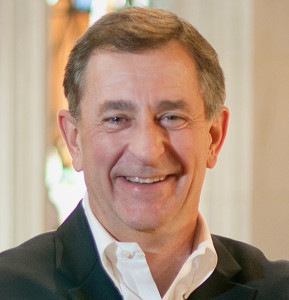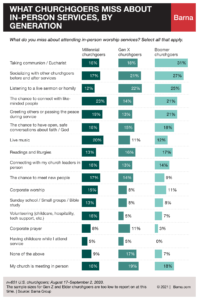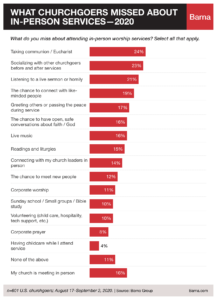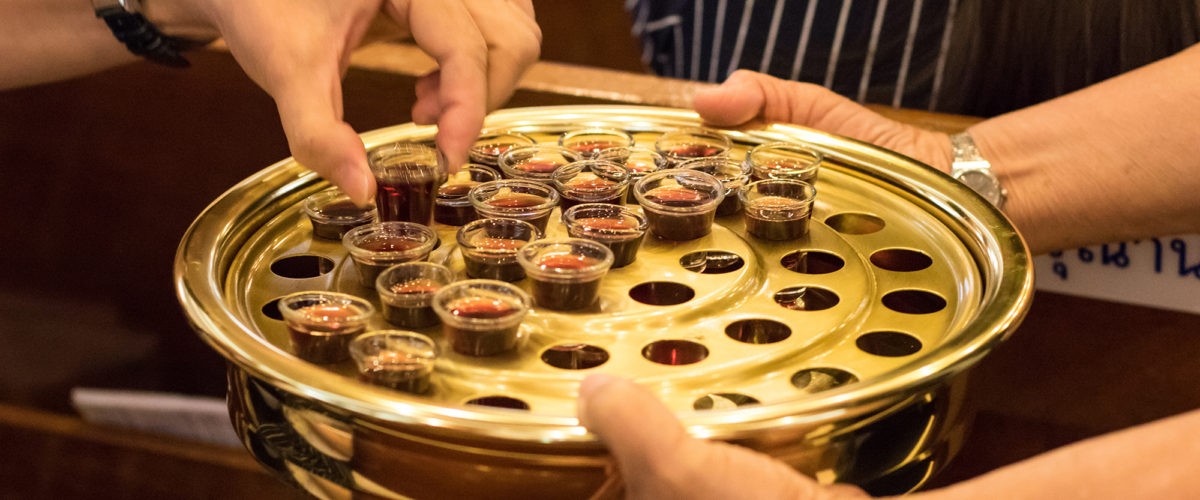Taking Communion, socializing and experiencing live sermons were the top features of in-person worship missed by churchgoers during the coronavirus outbreak, new research shows.
The aspects missed the least — partly because they were more easily provided online — included Bible studies, corporate prayer, small-group gatherings and Sunday school, the Barna Group said in a report titled, “What Churchgoers Missed Most About In-person Services.”

Bill Wilson
Already, there are indications that some of those least-missed ministries may discontinue after the pandemic or live on as hybrid gatherings, said Bill Wilson, founder and director of the Center for Healthy Churches.
“Small groups can be replicated online, and they are probably not coming back,” he said, adding the classes seem to be even more attractive virtually. “Many churches have seen their small group and Sunday school attendance increase when they count online and in-person participants.”
The statistics illuminating the centrality of the Lord’s Supper, fellowship time and hearing live sermons demonstrates the importance of participatory worship. “It’s the tactile piece — sharing the Eucharist, singing together, and the community that happens before and after worship — that you can’t do online,” he explained.
Barna’s findings confirm that observation. Among Christians whose church services were then-strictly online, 24% said Communion is what they missed most. Socializing before and after services was the element most missed by 23% of respondents.
“Among Christians whose church services were then-strictly online, 24% said Communion is what they missed most.”
“Other aspects of worship that rose to the top of the list included listening to a live sermon or homily (21%), the chance to connect with like-minded people (19%) and greeting others or passing the peace during service (17%),” Barna reported.
Another 16% said they missed “the chance to have open, safe conversations about faith/God” while 16% missed live music and 15% longed for “readings and liturgies.”
 Barna found agreement across generations in some of the categories. Millennials, Generation X and Baby Boomers missed socializing at church to relatively similar degrees — 17%, 21% and 27%, respectively. Gen X and Boomers also were close on missing live sermons, at 22% and 25%.
Barna found agreement across generations in some of the categories. Millennials, Generation X and Baby Boomers missed socializing at church to relatively similar degrees — 17%, 21% and 27%, respectively. Gen X and Boomers also were close on missing live sermons, at 22% and 25%.
Among church offerings missed the least, Barna reported that 10% identified Bible study, small groups and Sunday school. By generation, the percentage was highest among Millennials at 13%, followed by Gen Xers and Boomers, at 8% each.
“Millennials — along with Boomers — are more likely than Gen X to say they miss having the chance to connect with like-minded people (23% Millennials, 14% Gen X, 21% Boomers),” Barna said. “Younger churchgoers are also more likely than older generations to miss live music (20%) and volunteering (16%) at church but are less likely to miss listening to a live sermon or homily (12%).”
The survey testifies to the importance of providing meaningful, participatory in-person worship while continuing to offer virtual or hybrid Sunday school, small group and Bible study opportunities, Wilson said.
“So many more people are able to participate in virtual settings. Often people can’t come because they are out of town or medically unable to attend. One woman told me she has one hour when she can be at church and she wanted that hour to be worship. She could go to Sunday school online,” he said.
 What people miss about in-person worship is the experience of feeling the spirit move through the congregation.
What people miss about in-person worship is the experience of feeling the spirit move through the congregation.
“We know that 70% of communication is non-verbal,” Wilson said. “When I am in a room with other people who are being engaged in worship, there is a feeling in that space that they miss and can’t get virtually.”
How all those ministries look in the future will differ across communities, but figuring that out requires a discernment process for a post-COVID church in a post-Christian culture, he added. “COVID has raised awareness that we need to examine everything we do through the lens of relevance to those around us and to our own people.”
Related articles:
Second Easter during pandemic brings greater sense of hope nationwide
Most churchgoers say they’ll return to in-person worship after COVID


